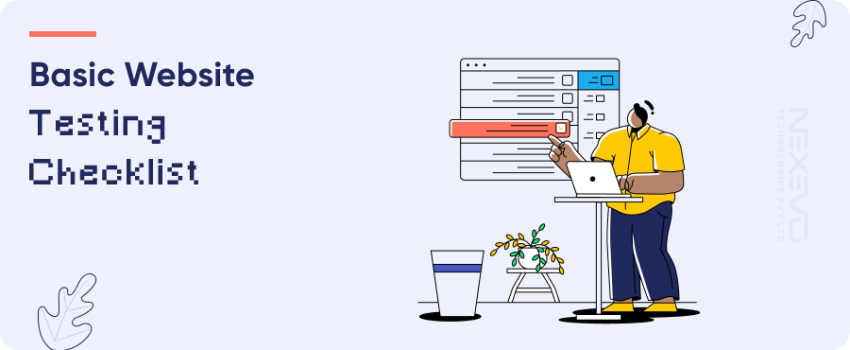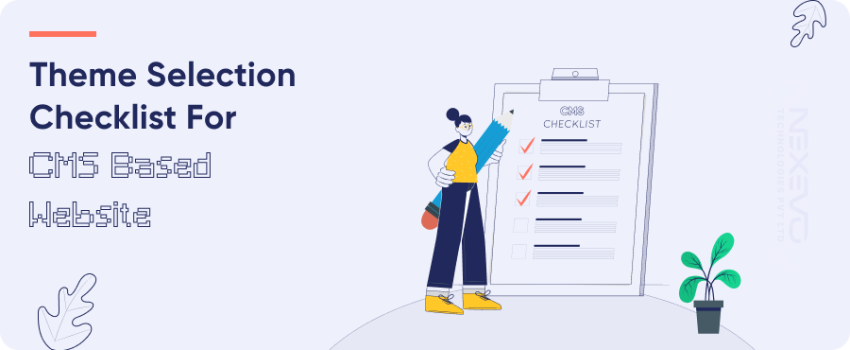Basic Website Testing Checklist
The Basic Website Testing Checklist ensures a comprehensive evaluation of a website's functionality, usability, and performance. Covering key elements like navigation, responsiveness, and browser compatibility, this checklist is an essential tool for developers and QA teams to guarantee a seamless user experience and optimal website performance.

Overview:
Welcome to the world of website testing! Whether you're a seasoned developer or just starting your journey in web development, ensuring your website functions smoothly is crucial. In this blog, we've compiled a Basic Website Testing Checklist to simplify the process. From checking links and responsiveness to testing forms, this checklist will guide you through the essential steps to guarantee your website is user-friendly and error-free. Let's dive into the fundamentals of website testing!
Here is the Basic Website Testing Checklist:
UI Testing
- Check the Title of the website it is optimized as per the website name
- Check the FAV icon, it is optimized with the proper logo
- Font styles - Font size, color, and family
- Check if the images are not breaking and don’t have any watermarks
- Check if the label text is clearly readable
- Check if the error and validation messages are displaying correctly
- Check if there are no spelling mistakes in the field labels and web page headings
- Check if the disabled fields are not accepting any input
- Proof Reading for all the pages (. , missing, etc..,)
- Check if the links are visible and distinguishable from the other text
- Check if the social networking icons are rightly placed on sites and links are working properly
- Check if there are no broken links on the web page
- Check if the site logo is visible and clickable
- Verify if elements in the dropdown are not overlapping
- Check if the menu or submenu that is selected remains highlighted
- All the text should be properly aligned.
Functionality Testing
- Test all the mandatory fields should be validated.
- Test the asterisk sign should display for all the mandatory fields.
- Test the system should not display the error message for optional fields.
- Test the max length of every field to ensure the data is not truncated.
- Test that a confirmation message should display for update and delete operations.
- Test the amount values should be displayed in currency format.
- Test all input fields for special characters.
- Test the Sorting functionality.
- Test the functionality of the buttons available
- Test the Privacy Policy & FAQ is clearly defined and should be available for users.
- Test if any functionality fails the user gets redirected to the custom error page.
- Test the email functionality of the system.
- Test all the data inside the combo/list box is arranged in chronological order.
- The scroll bar should appear only if required.
- Checking that product pages load properly
- Adding product/s to the shopping cart
- check Whislist working
- Checking the shopping cart loads properly
- Check Login, register, forget password functionality
- Checking the checkout loads properly
- Checking that customers can check as guest
- Checking that new customers can register and log in at checkout
- Testing that the payment process works properly
- Testing that customers can complete the checkout process
Responsive Testing:
- Use the hamburger icon on smaller devices with the hidden navigation
- Assure that the user can navigate easily with the swipe gestures
- Small device mobile - 375px
- Medium device - 768px
- Desktop Device
Browser Compatibility Testing
- Checkboxes, radio buttons, and forms are aligned correctly.
- Checking the alignment of data content on the web pages.
- Proper spacing between sections, fields, paragraphs, images, and data contents.
- Horizontal and Vertical scroll bar appearance.
- Proper navigation between the web pages.
- Major Browser testing - Mozilla, Microsoft Edge, Google Chrome, Safari
Performance Testing
- Scale Up Users Over Time - (Use J-meter)
Security Testing
- USER ACCOUNTS SECURITY
- USER LOGIN SECURITY
- USER REGISTRATION SECURITY
- DATABASE SECURITY
- FILE SYSTEM SECURITY
- HTACCESS AND WP-CONFIG.PHP FILE BACKUP AND RESTORE
- BLACKLIST FUNCTIONALITY
- FIREWALL FUNCTIONALITY
- BRUTE FORCE LOGIN ATTACK PREVENTION
- SECURITY SCANNER
- COMMENT SPAM SECURITY
- FRONT-END TEXT COPY PROTECTION
Conclusion:
In conclusion, ensuring your website's success begins with a solid foundation of testing. By following this basic website testing checklist, you're not just identifying and fixing issues – you're enhancing user experience and building trust. Remember, testing is not a one-time task; it's an ongoing process to adapt to evolving needs. Regularly check your site for performance, security, and user-friendliness to keep it running smoothly and leave a lasting positive impression on your visitors. Happy testing!
Frequently Asked Questions
1. Why is website testing important?
Website testing is crucial to identify and rectify issues related to functionality, performance, and user experience, ensuring a seamless online presence.
2. Why is usability testing essential for a website?
Usability testing evaluates how easily users can navigate and interact with your website, identifying areas for improvement in terms of user-friendliness.
3. What is compatibility testing, and why is it necessary?
Compatibility testing ensures that your website functions correctly across different browsers, devices, and operating systems.
4. How often should I perform website testing using this checklist?
It is recommended to conduct regular website testing, especially after any significant updates or changes, to maintain optimal performance.
5. Is the Basic Website Testing Checklist suitable for both new and existing websites?
Yes, the checklist is designed to be applicable to both newly developed websites and existing ones to ensure ongoing quality.
Related to this
Let's Discuss Your Project









